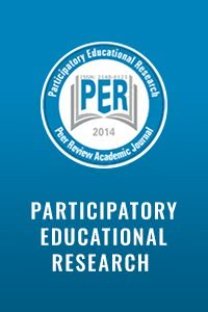Improving English as a Foreign Language (EFL) Learners’ ICT Literacy Skills through Digital Storytelling
Building 21st century literacy skills in every
field of education has become one of the objectives of educational policies in
almost each country. In a broad sense, 21st century skills refer to a set of
knowledge, skills, and characteristics which are believed to be of great
importance for today’s students’ success in the ever-changing technological
environment. There is no doubt that one of these skills which is desired to be
enhanced is Information and Communication Technology Literacy Skill (ICT) of
today’s students. Educators and educational practitioners have been searching
for how to foster students’ ICT literacy skills best so that they can keep up
with the recent developments. In this context, EFL learners’ ICT literacy
skills need to be improved as they will encounter digital natives when they
start teaching. One of the effective ways of fostering ICT literacy skill is to
utilize digital storytelling in foreign language classes. Because digital
storytelling combines multiple modes of technology such as photographs, music,
movie maker and recording tools, video clips, text, audio narration, and etc. to
produce successful stories, EFL learners need be competent enough to be able to
use these tools effectively. Digital stories enable learners to produce oral,
written, and visual messages and to interact with others. The present study
attempts to highlight the possible benefits of digital storytelling and
indicate how students’ projects as to digital stories help them to improve
their ICT literacy skills. To this end, prospective English language teachers’
projects on creating digital stories were examined within the scope of
computer-assisted language learning (CALL) course which was offered as an
elective course for senior students in the spring term of 2015-2016 academic
year at the department of English Language Teacher Education (ELT). Analyses of
the projects prepared by the students show that students’ ICT skills can be
considered to be highly satisfying in terms of incorporating different
technological materials into a single story. It can be concluded that being one
of the most important 21st century skills, ICT literacy skill can be enhanced
through preparing digital stories to a great extent.
Keywords:
digital storytelling, ict skills, technology language teaching,
___
- Boster, F. J., Meyer, G. S., Roberto, A. J., & Inge, C. C. (2002). A report on the effect of the United Streaming application on educational performance. Farmville, VA: Longwood University.
- Brown, J., Bryan, J., & Brown, T. (2005). Twenty-first century literacy and technology in K-8 classrooms. Innovate: Journal of Online Education.1 (3). Retrieved on 26 August, 2016 from http://nsuworks.nova.edu/cgi/viewcontent.cgi?article=1189&context=innovate Casta, M. E. (2013). " I am proud that I did it and it's a piece of me": Digital Storytelling in the Foreign Language Classroom. CALICO Journal, 30(1), 44. Gregori-Signes, C. (2008). Integrating the old and the new: Digital storytelling in the EFL language classroom. GRETA, 16(1&2), 43–49.
- Hibbing, A. N., & Rankin-Erikson, J. L. (2003). A picture is worth a thousand words: Using visual images to improve comprehension for middle school struggling readers. Reading Teacher, 56(8), 758–770.
- Jonassen, D. H., Peck, K. L., & Wilson, B. G. (1999). Learning with technology: A constructivist perspective. Upper Saddle River, NJ: Merrill/Prentice Hall Partnership for 21st Century Learning. (2015). P21 Framework definitions. Retrieved on 26 August, 2016 from http://www.p21.org
- Lambert, J. (2006). Digital storytelling cookbook. Berkeley: Digital Diner Press.
- Lambert, J. (2007). Digital storytelling cookbook. San Francisco: Digital Diner Press
- Lambert, J. (2010). Digital storytelling cookbook. Berkeley: Digital Diner Press.
- Robin, B. (2006). The educational uses of digital storytelling. In D. A. Willis, J. Price, N. E. Davis, & R. Weber (Eds.), Proceedings of the Society for Information Technology & Teacher Education International Conference 2006 (pp. 709–716). Chesapeake, VA: AACE.
- Rodríguez Illera, J. L. & Londoño Monroy, G. (2009). Los relatos digitales y su interés educativo. Educação, Formação & Tecnologias, 2(1), 5–18.
- Torres, A. R., Ponce, E. P., & Pastor, M. D. G. (2012). Digital Storytelling as a Pedagogical Tool within a Didactic Sequence in Foreign Language Teaching. Digital Education Review, 22, 1-18.
- Trilling, B. & Fadel, C. (2009). 21st Century Skills: Learning for Life in Our Times, Jossey-Bass, San Francisco, CA.
- ISSN: 2148-6123
- Yayın Aralığı: Yılda 6 Sayı
- Başlangıç: 2014
- Yayıncı: Özgen KORKMAZ
